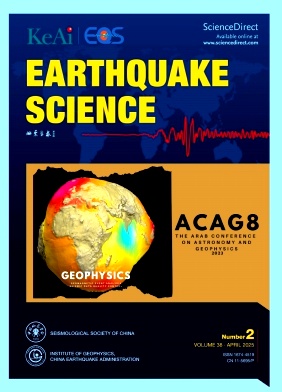| 投稿方式:官网投稿 |
- 栏目频次
- 单位占比
-
热词

低频栏目
-
更多
期刊简介
- 《地震学报(英文版)》(Earthquake Science)(双月刊),创刊于1988年,是由中国地震学会、中国地震局地球物理研究所主办的地震学综合性学术刊物。主要刊登地震学方面的具有创新性的研究成果和技术成就,也登载一些与地震有关的地球物理、地震地质、工程地震等的学术论文及研究简报;登载本学科不同学术观点的文章;介绍地震学及其有关的重大学术问题的研究现状和发展;登载与地震学有关的评述文章;反映地震学及其有关科技工作动态。主要栏目有:学术论文、研究简报、学术讨论、综述等。
-
基本信息
- 期刊名称:地震学报(英文版)(Earthquake Science)(OA期刊)
- 主管单位:中国科学技术协会
- 主办单位:中国地震学会、中国地震局地球物理研究所
- 国内刊号:CN 11-4987/R
- 国际刊号:ISSN 1672-7681;EISSN2042-0226
-
- 出刊日期:
- 期刊定价:
-
- 邮发代码:
-
- 所在省区:北京
- 邮政编码:
- 联系地址:
-
投稿信息
-
- 学科分类:天文地球科学
- 版面费用:待核实
-
- 字数要求:6000-18000
- 查重要求:-
-
- 复合因子:0.926
- 综合因子:0.8
-
- 审 稿 费:待核实
- 稿费:待核实
- 本刊可发:
- 特殊属性:第一批认定学术期刊,外文期刊
-
联系方式
- 投稿网址:https://www.editorialmanager.com/eqs
- 官网网址:http://www.equsci.org.cn/
- 电话传真:010-68729344(官网信息)
-
电子邮箱:equsci@126.com
equsci@cea-igp.ac.cn(官网信息) - 微信公众号:Earthquake Science;震球期刊

